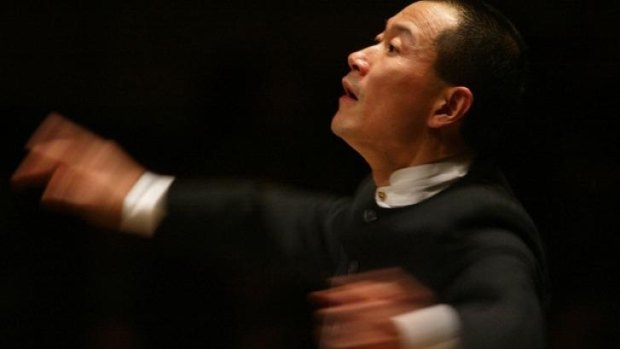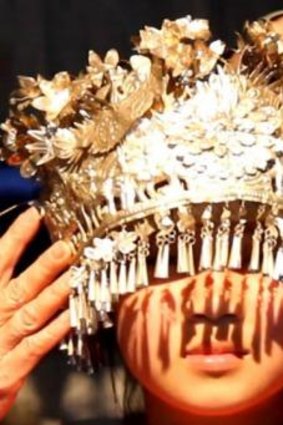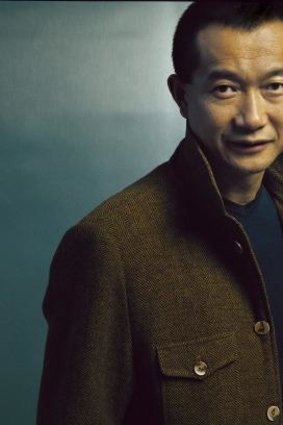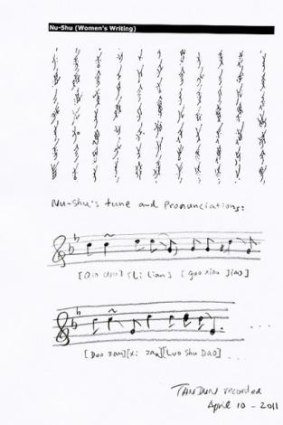This was published 9 years ago
Tan Dun incorporates Nu Shu, the ancient secret language of Hunan women, into musical work
New York-based composer Tan Dun tells the story of a day early in China's Cultural Revolution when some women from the deep mountains of a province in southern Hunan wanted to meet visiting chairman Mao Tse Tung. The famed leader's soldiers and aides were, however, confused by the women, who were incomprehensible as they sang strange words when trying to communicate. They were shooed off to a hospital because they were thought to have some serious health problem.
Linguists eventually worked out that the women had a secret language among themselves, one that was sung rather than spoken. And it was ancient, stretching back to at least the 13th century, though its true origins are debated among scholars. Somehow, the language Nu Shu had been preserved, a living language that the women had managed to keep between their own mothers, daughters, sisters and aunts. They even wrote the poetry and lyrics of Nu Shu on fans, undergarments and other artefacts to quietly slip to each other, unbeknown to the men in their world.

In action: Tan Dun.
When New York-based composer Tan Dun heard the story of Nu Shu some years ago, he was in Taiwan as a conductor. He was ashamed – having been born in a southern Hunan town – that he'd never heard the story of the secret women's language, but he was fascinated and immediately embarked on research. He was thirsty for more information.
It was a five-year journey and when he started there were 13 women alive who still used the language; when he finished, there were only six of the women left.

Labour of love: A girl in the Hunan province.
When he visits Melbourne next month for Chinese New Year to present his 13-part symphony against a backdrop of 13 short films that resulted from his immersive research, there will be more than just the physical results of his endeavours: there will, he says, also be an abiding spirit of beauty that has been with him since his work on Nu Shu began.
The Secret Songs of Women, says Dun, began even before he heard about the Hunanese women and Nu Shu: for a long time, he says, he has wanted to fuse the traditions of classical music with new technologies and "the sound of the future" – and the story he heard about Nu Shu seemed the perfect opportunity to develop such a work. Thus he has incorporated the 13 short films he made of the women with the music played by symphony orchestra, along with the sound of the harp – an instrument he considers distinctly feminine in both its sound and its history.
When Dun first travelled to Hunan to meet the Nu Shu women it took a long time to build up trust with them. "Many were very old," says Dun. "In the very early research it was very difficult to get into the women's world – but to get into the old women's world is even more difficult. They were afraid. They had been chased and squeezed too much by history, treated too strangely."

Composer and conductor Tan Dun.
Dun, though, started to sing for them and play his music for them. "I told them 'I am a musician, I am a composer, I want to compose something for you and to preserve this tradition'. I wanted people to hear their voice. And gradually, we were cooking for each other and eating a lot and I spent so much time as a cook for them that eventually we became friends.
"Then they opened their hearts to me and we had so many days talking, recording and singing together."

Sheet music from The Secret Songs of Women.
When he embarked on this long project, he initially made a visit to local Hunan government offices to discuss it. He was, he says, asked which "school" he was from. He soon discovered this referred to the various schools of thought about Nu Shu's origins.
While some scholars believe it emerged in 13th century male-dominated feudal societies when women had no chance to go to school or to be educated, others propose it was created much earlier by educated women who purposefully designed it so it could not be read by men.
"I said I was not a linguist in either school but my own school," he says. "Because every piece of this language written in secret fans or bras or handicrafts are all sing-able. Every single piece of its poetry comes with a melody. I was interested to discover where the melodies came from and research it from a musical point of view. They [the women] were immediately fascinated so they started singing for me."
Dun says that while the Nu Shu tradition is dying out, it remains incredibly powerful: "We did 200 hours of recording and after this I had a call from the National Museum of China asking for it, because this was the first time anything had been documented on film."
More interesting is that when Dun and the Philadelphia Symphony Orchestra went to Hunan to perform The Secret Songs of Women symphony, many members of the orchestra were deeply moved when "the inspiration and the dream met together" – the original women Dun had worked with being the "inspiration" and the symphony being the "dream".
The orchestra, he says, had performed and rehearsed the work so many times but now they realised "the three dimensions of the inspirations" – the women themselves, and the written script of Nu Shu which Dun says looks like a flock of mosquitoes.
Amid the music and the visual material of The Secret Songs of Women is Dun's central idea bout the Nu Shu women: "Who has the most tears in this world? Mothers. And who are the happiest people? Mothers. You know why? Because mothers actually are living in a dream."
What he means is that mothers have such immense strength and so much belief in their children that this always results in both tears and joy. "And so the ending part of the symphony is called 'living in dream'."
While rehearsing this piece with various orchestras, Dun has noticed that always there are at least a few of the musicians who are moved to tears. "Not because it is so sad but because of how beautiful the process is to discover the women's secret world. It is really, really beautiful."
Dun sees the harp as central in creating this atmosphere. "We are talking to the past through the bridge of the harp," he says. "To me the harp sounds like a very feminine instrument. I really wanted to make the harp, for the first time, a very dramatic and an historical tool." Rarely is it the focus of an orchestra, but as Dun says he did not want the symphony to sound like the music of Stravinsky, Debussy or Bartok: he wanted it to sound distinctly like a Tan Dun orchestra.
And that, it seems, is his own language – but one that he is not keeping secret.
Tan Dun and the Melbourne Symphony Orchestra, featuring harpist Yinuo Mu, will play The Secret Songs of Women at Hamer Hall on February 28. www.mso.com.au